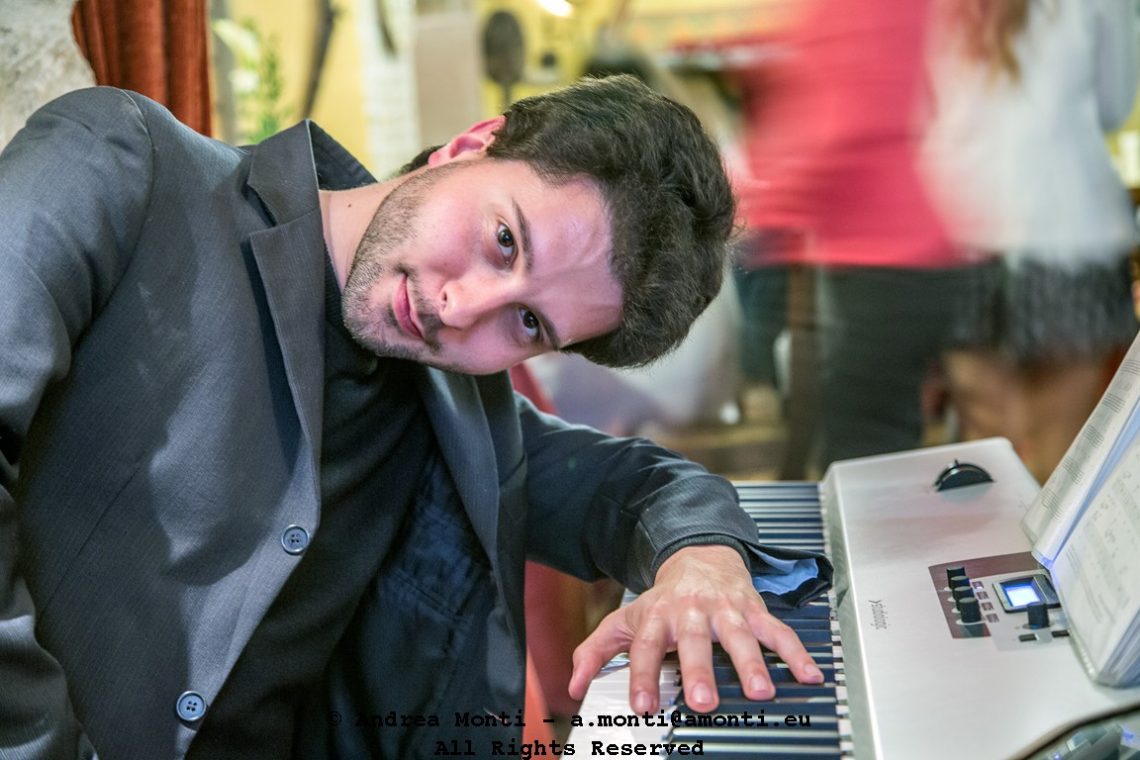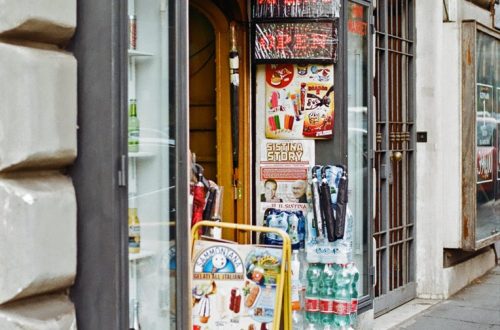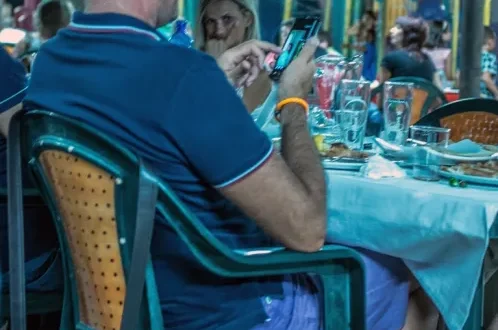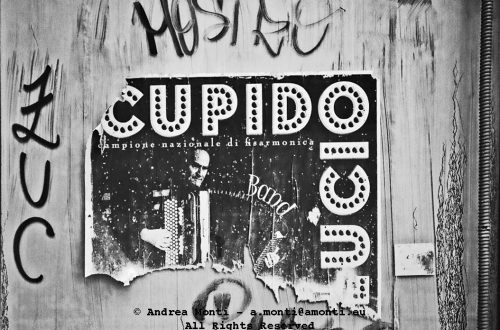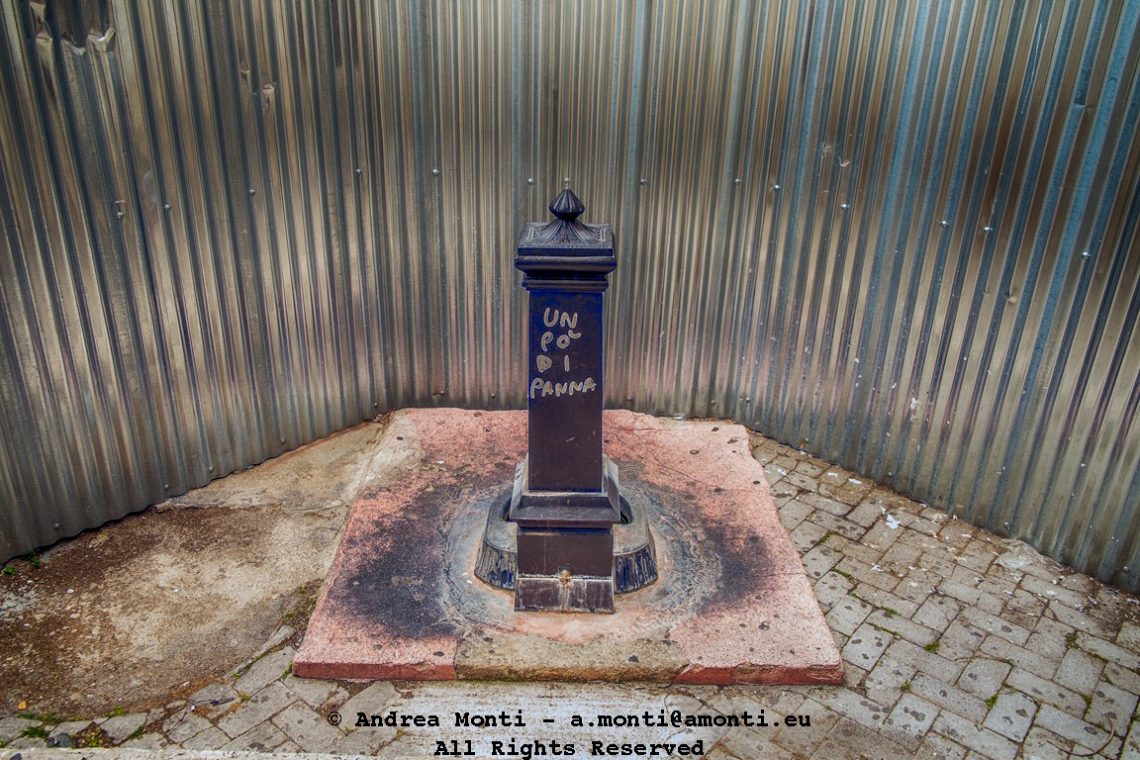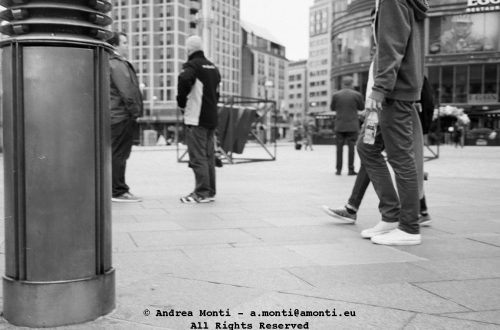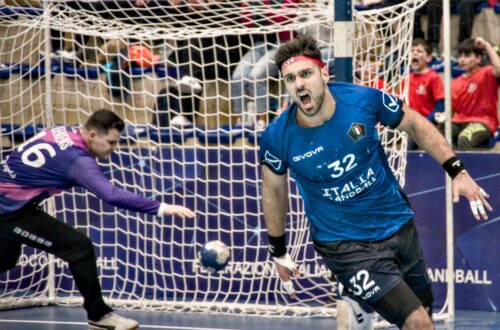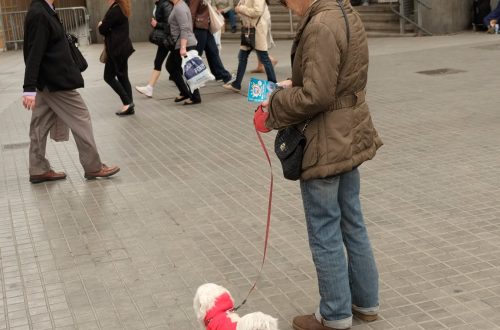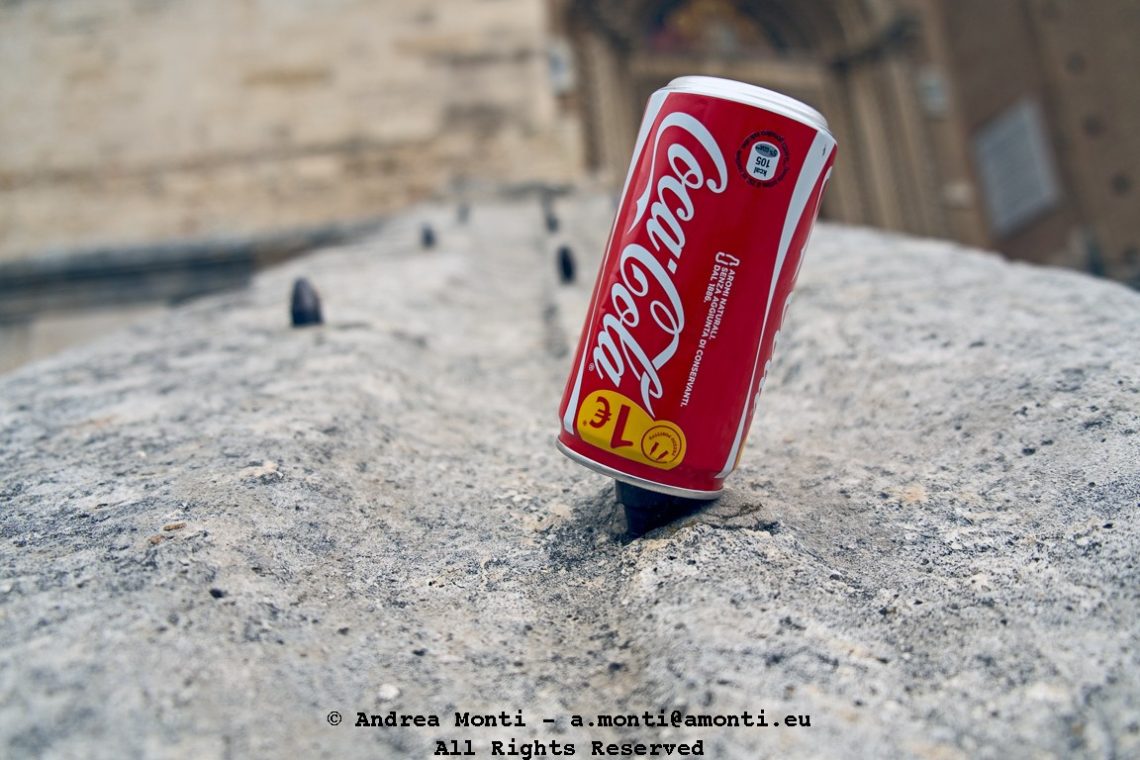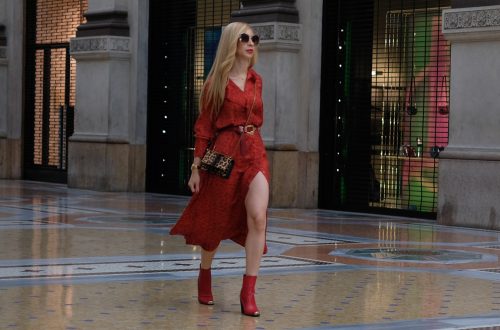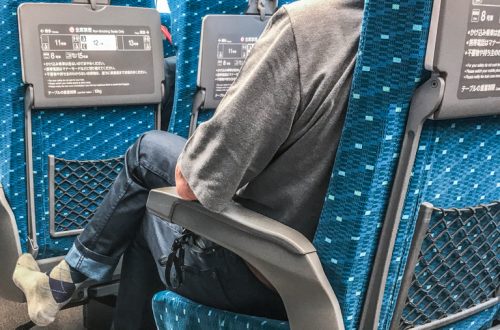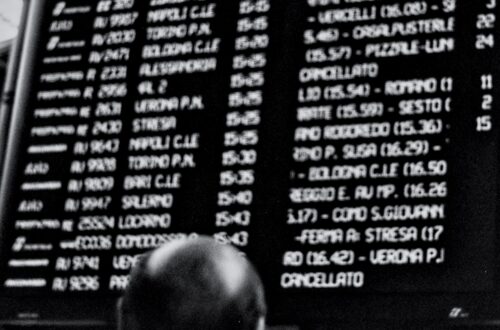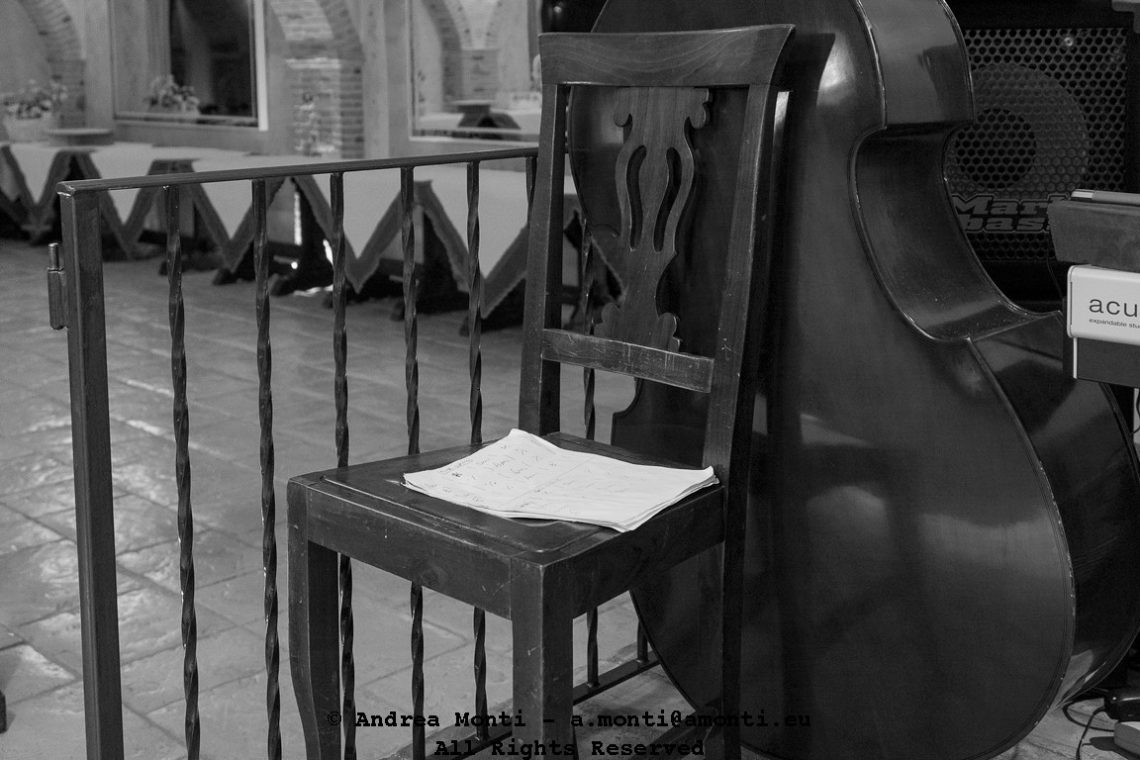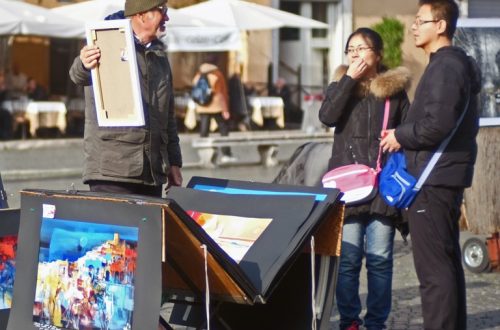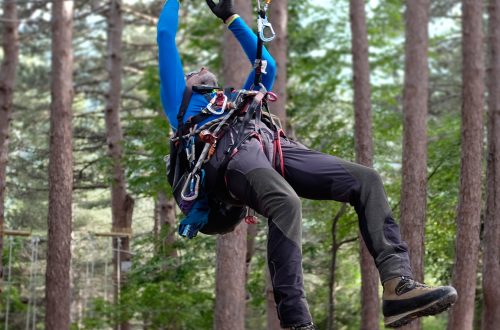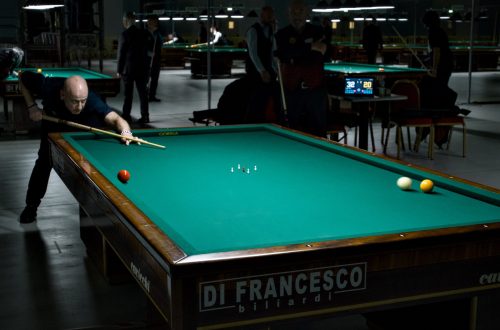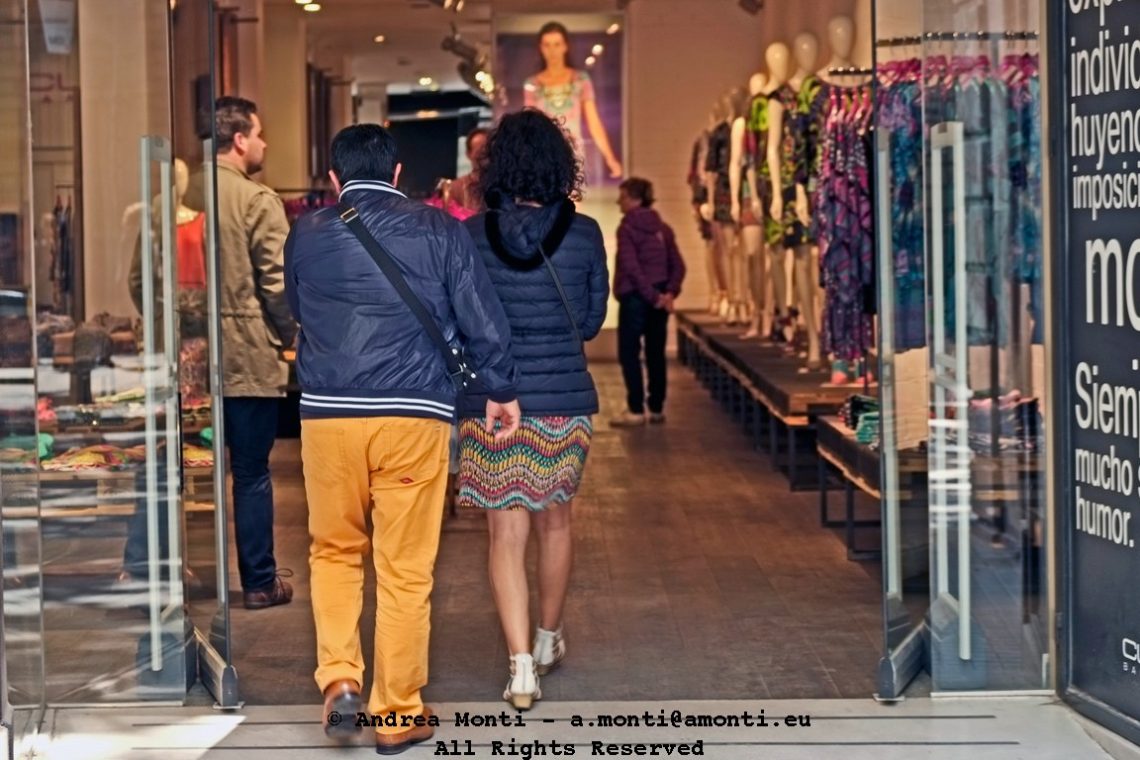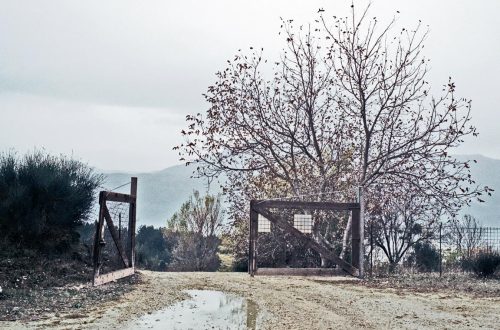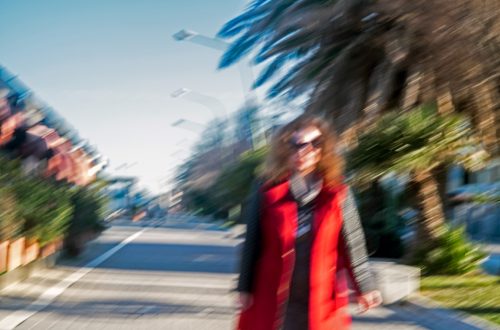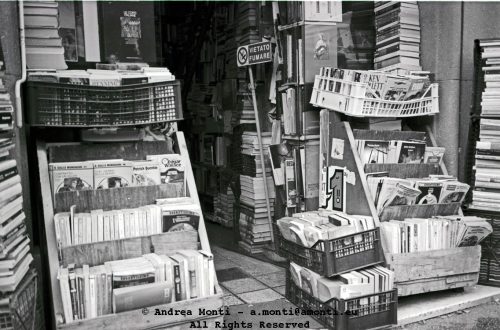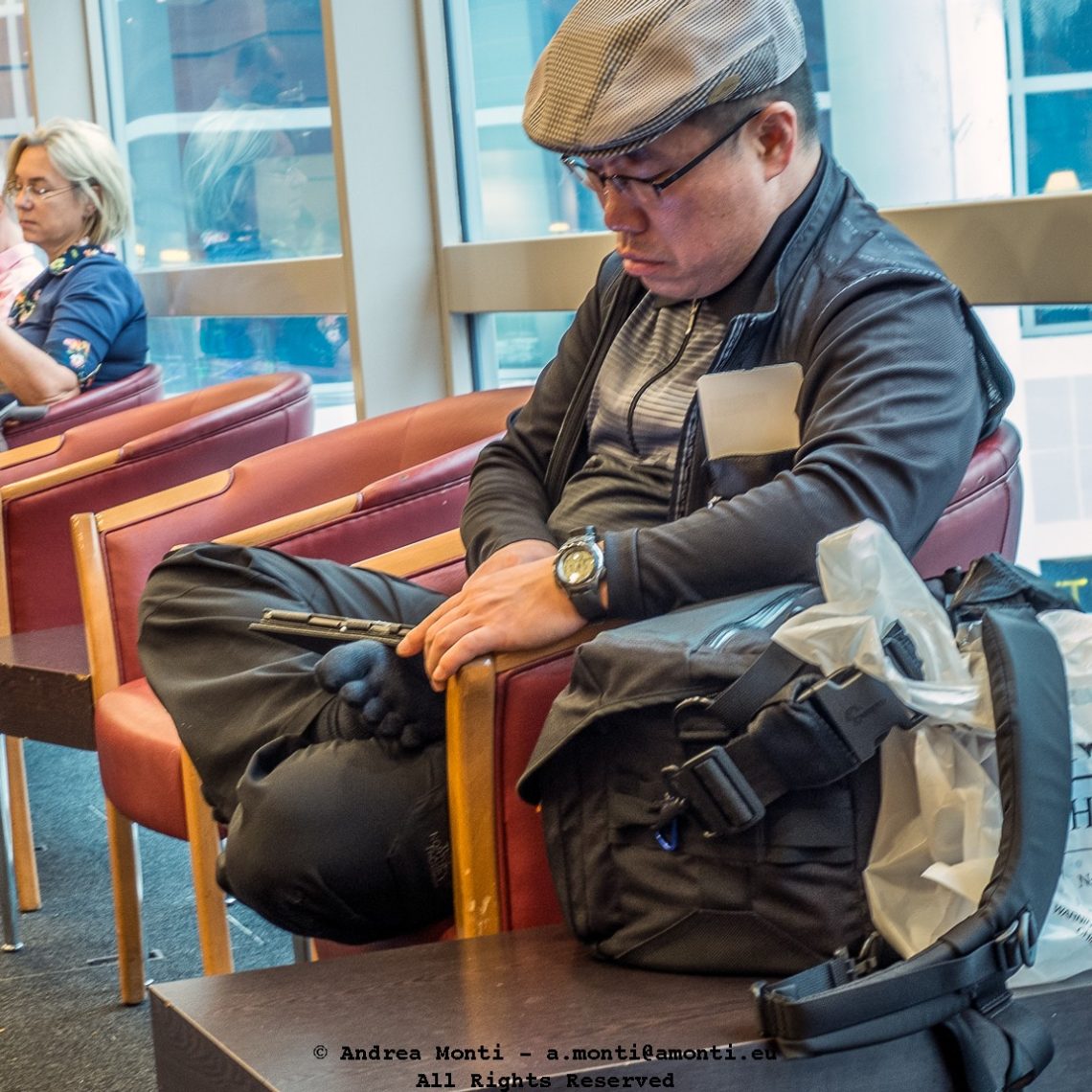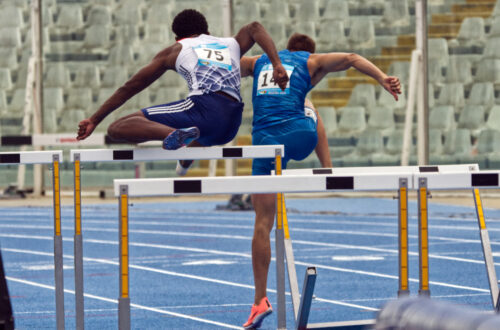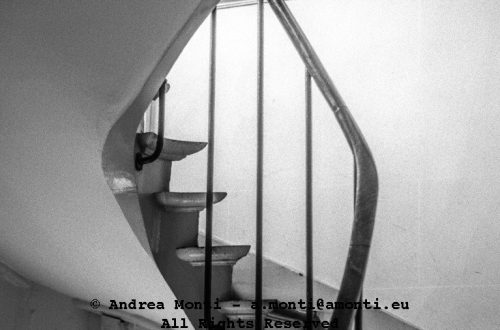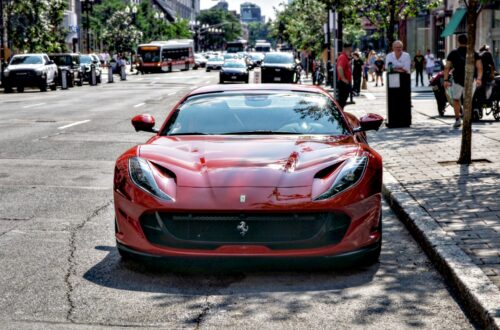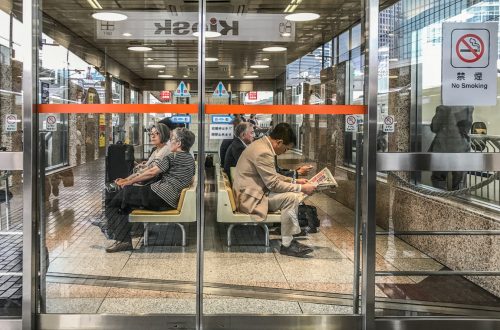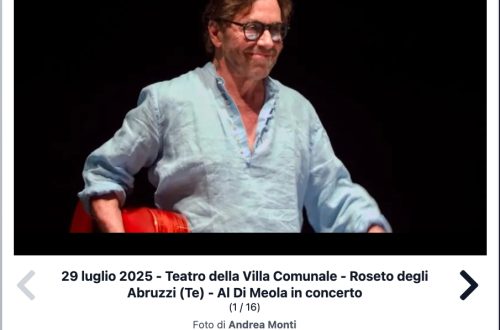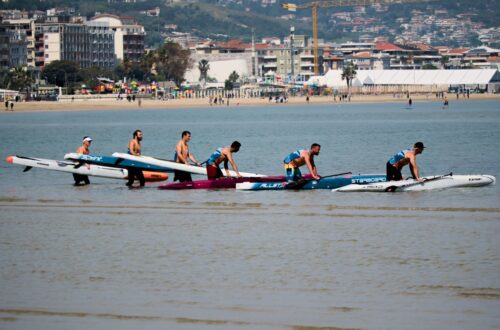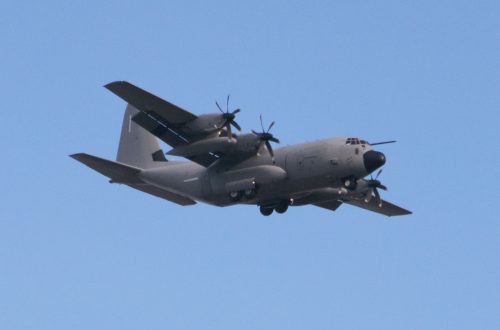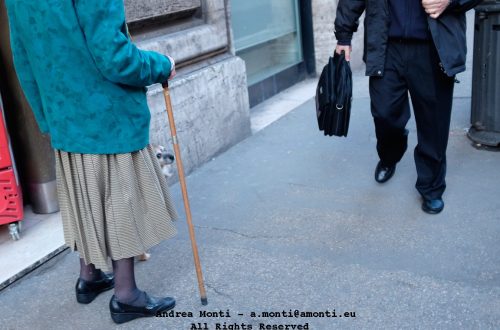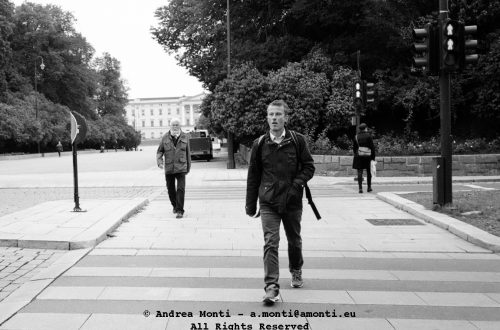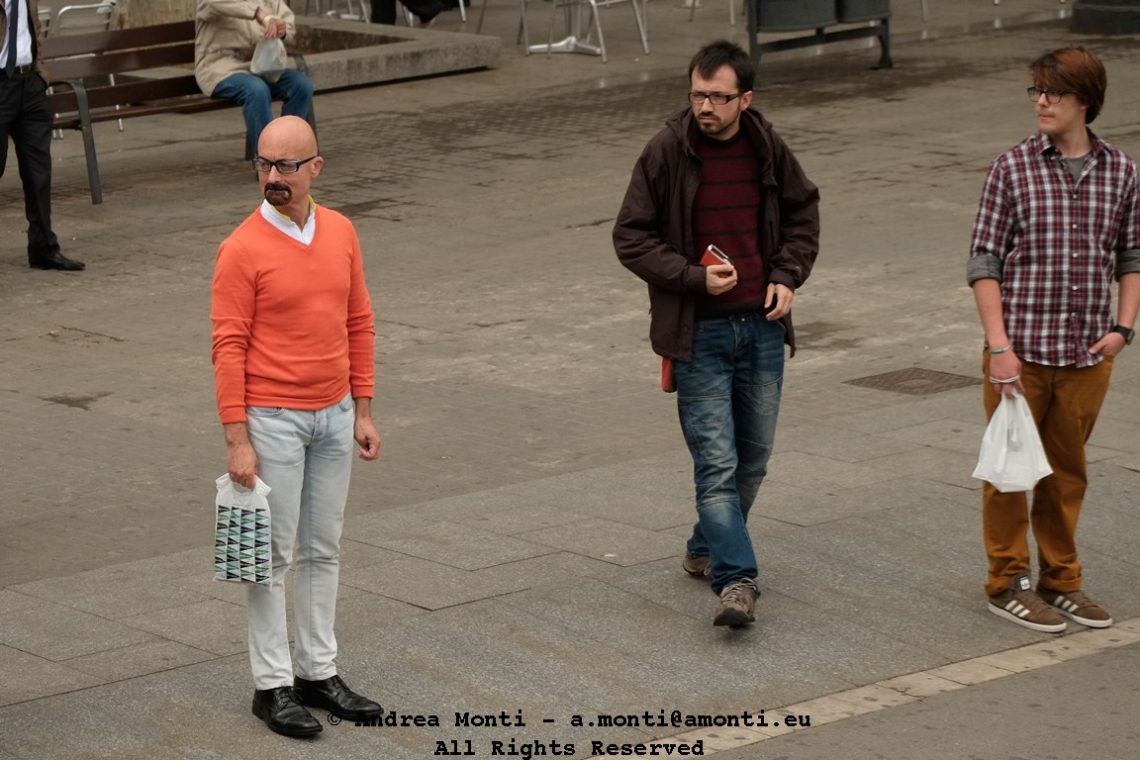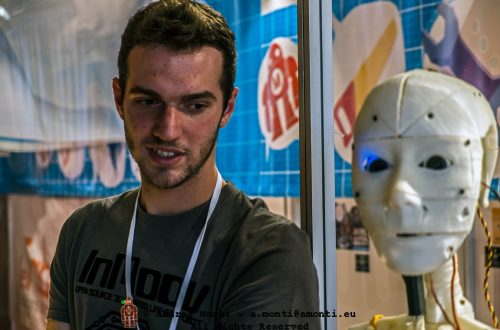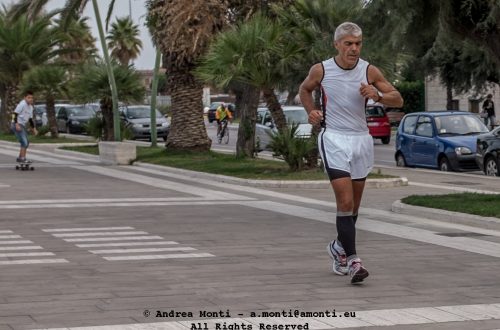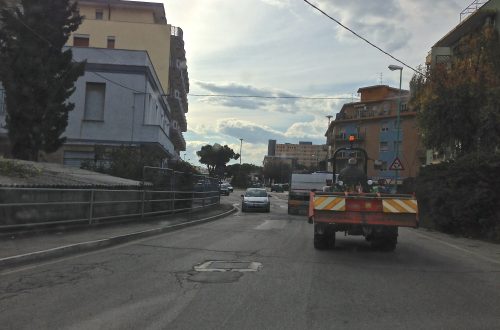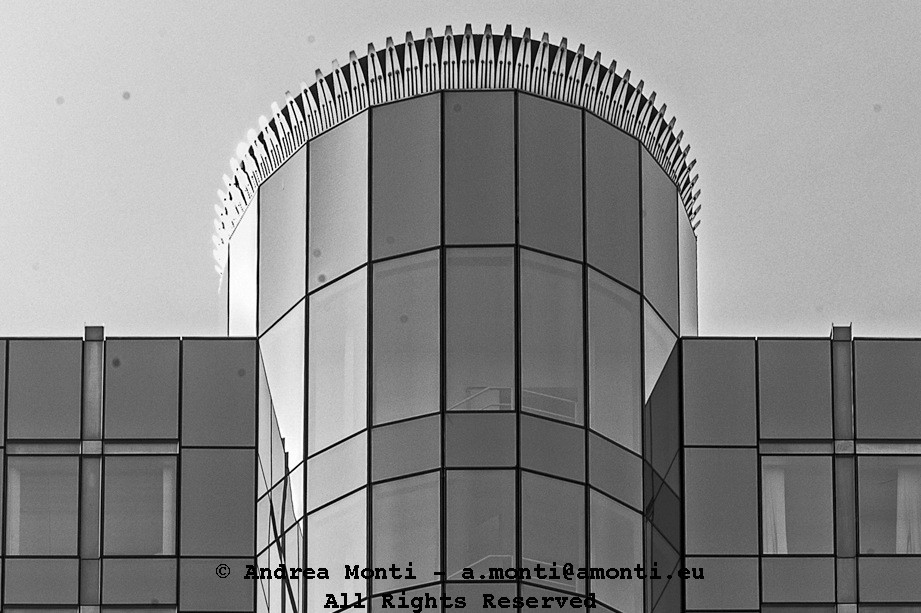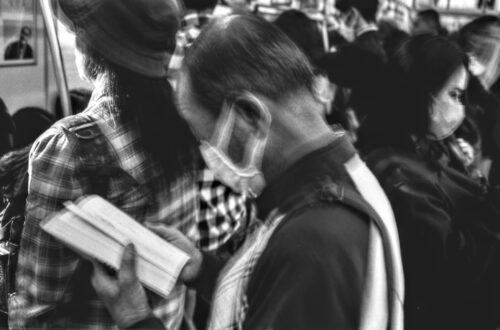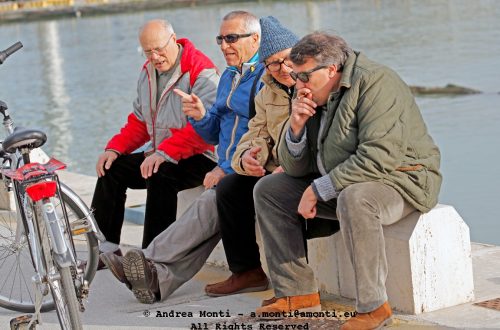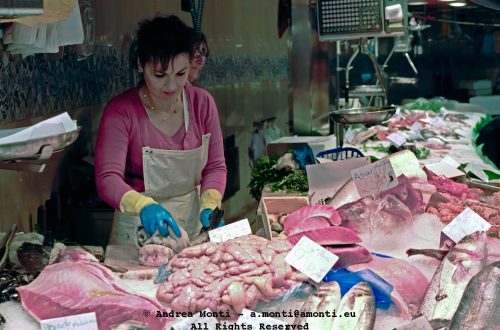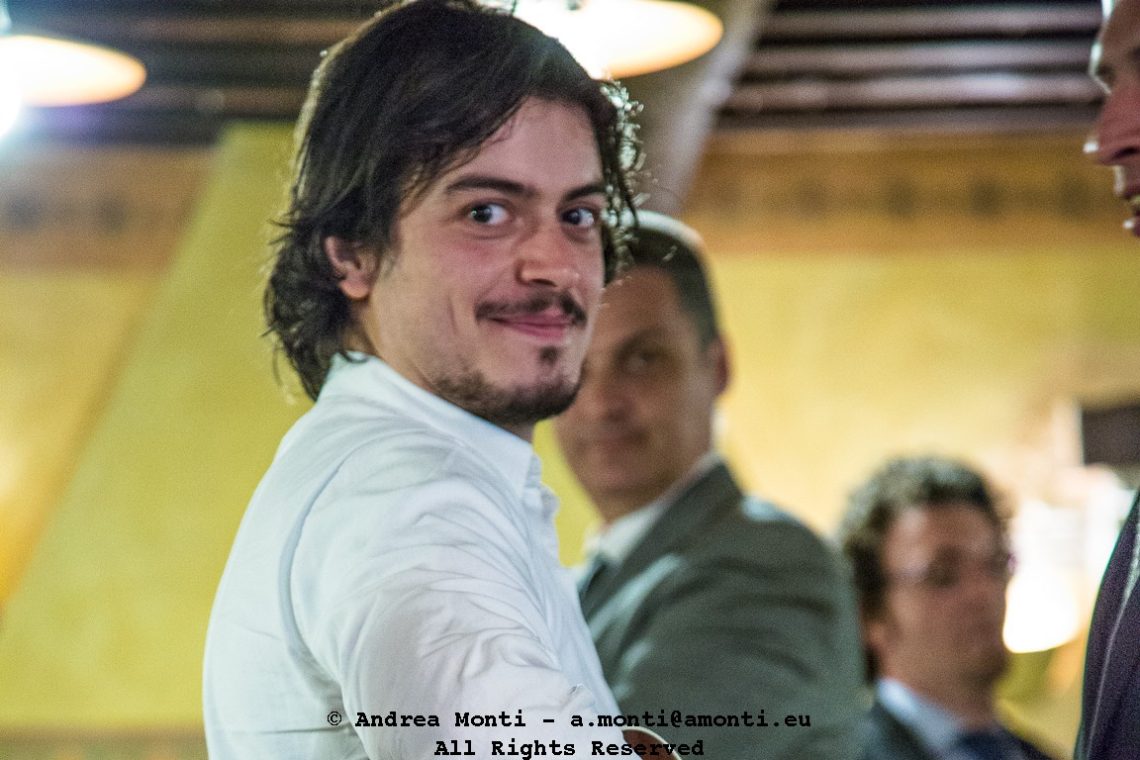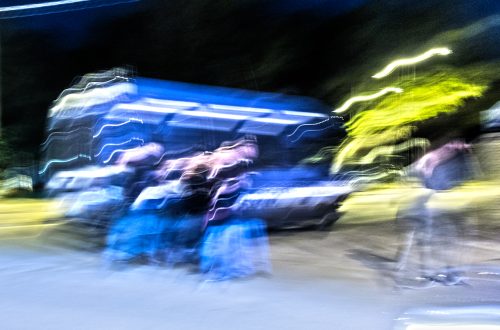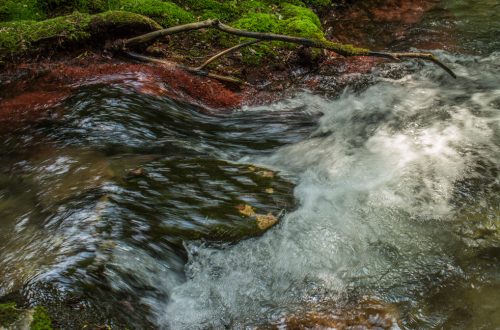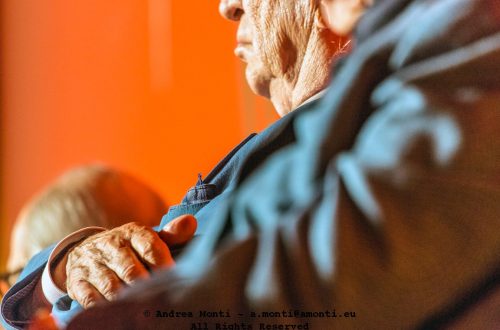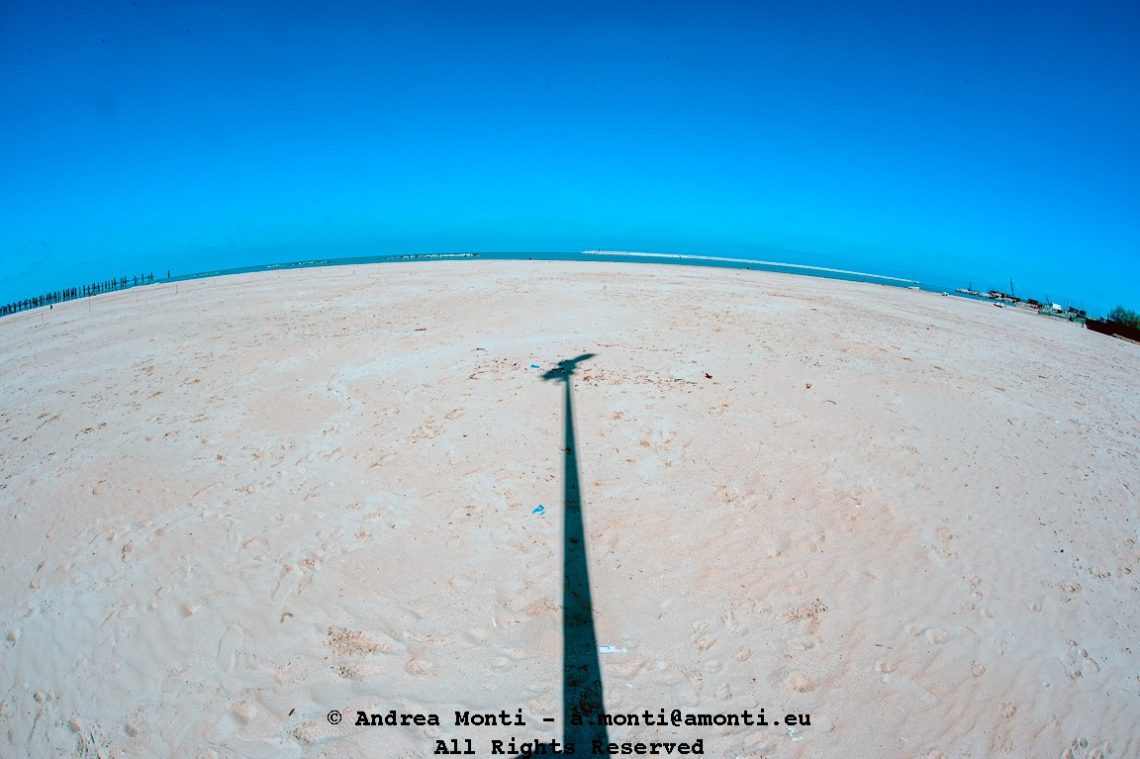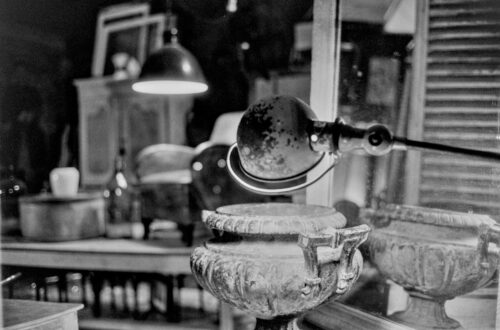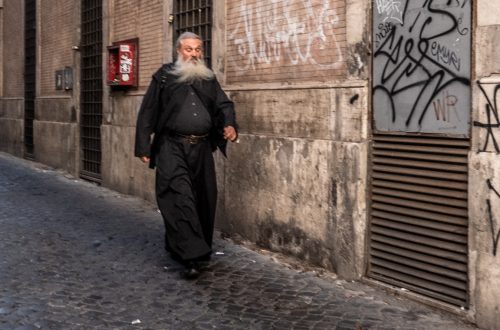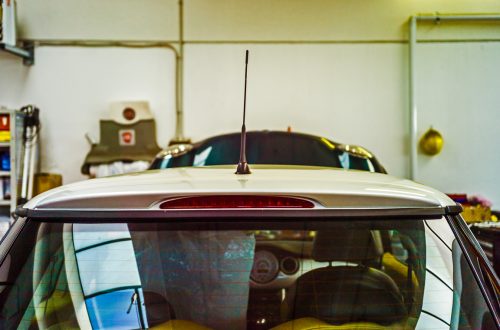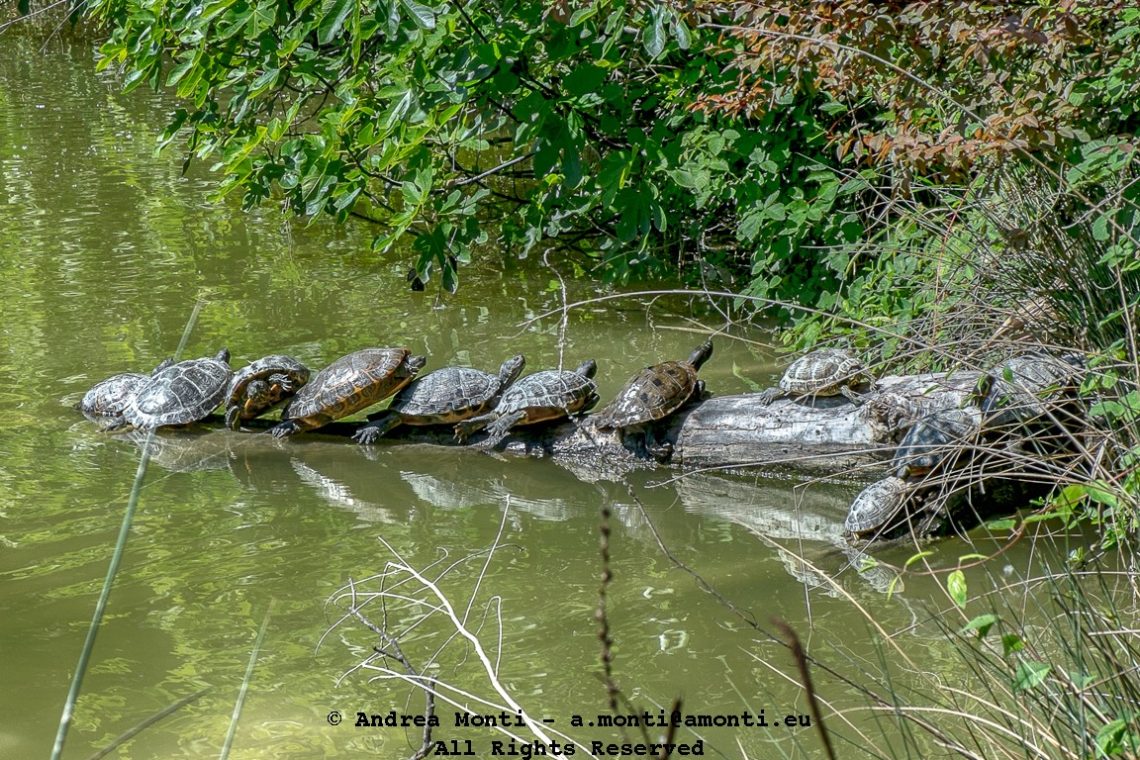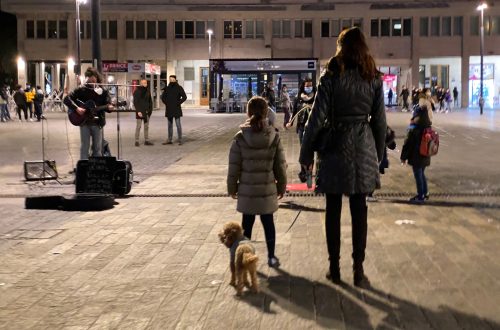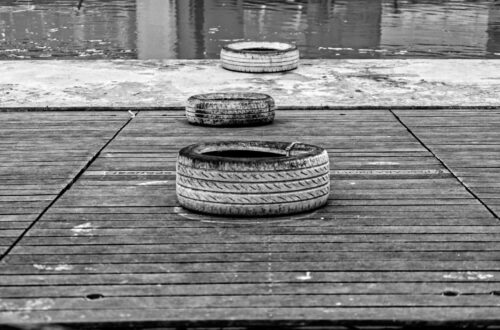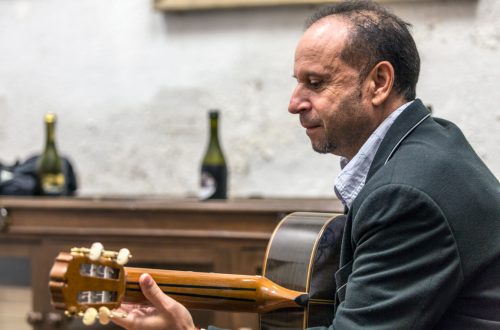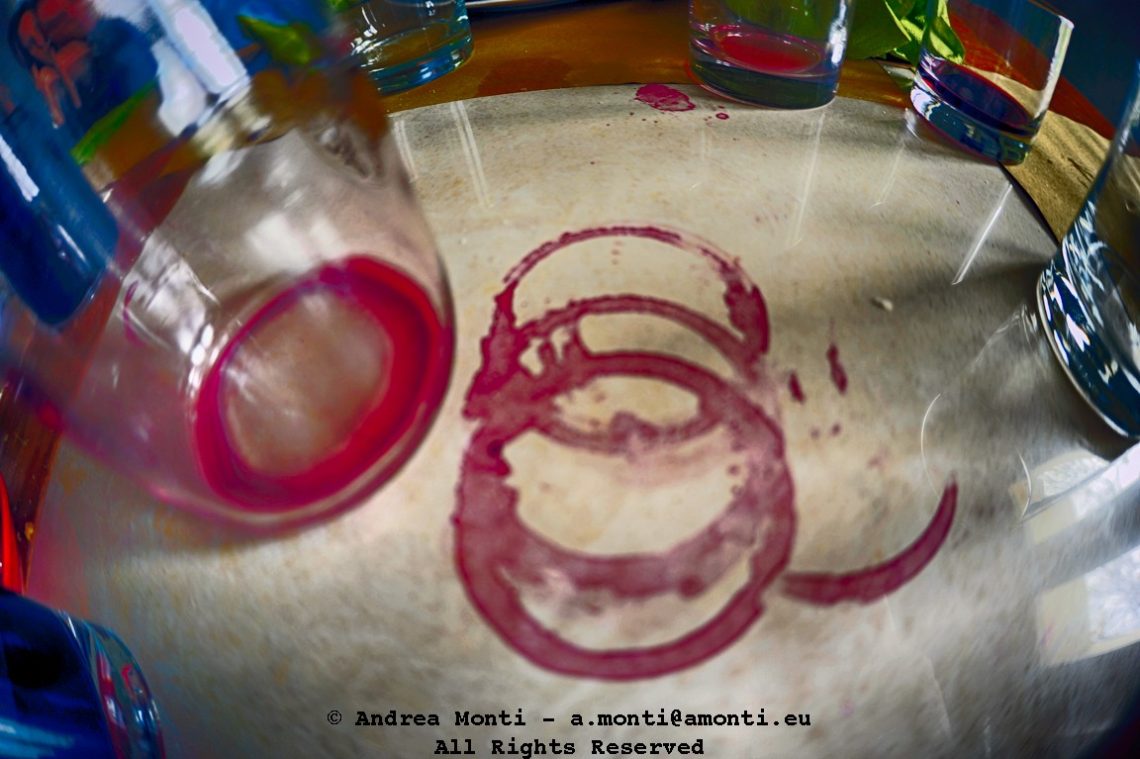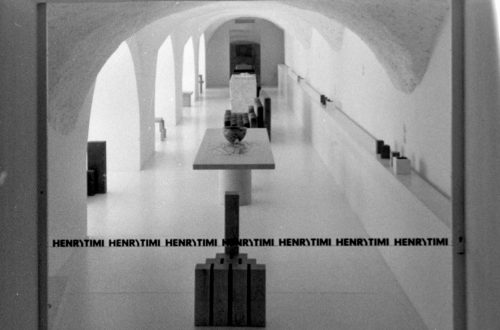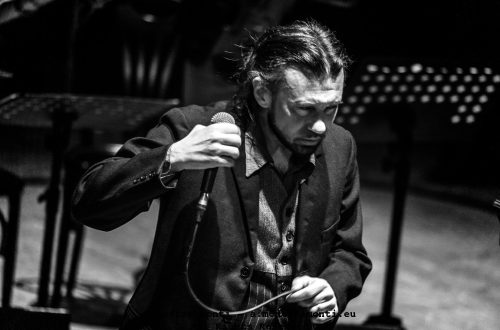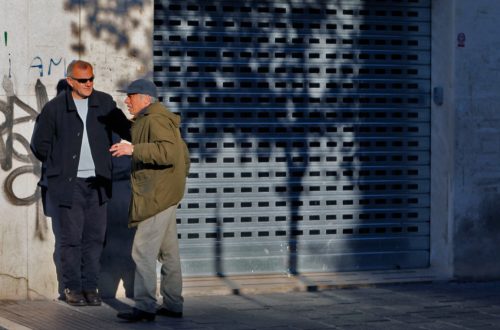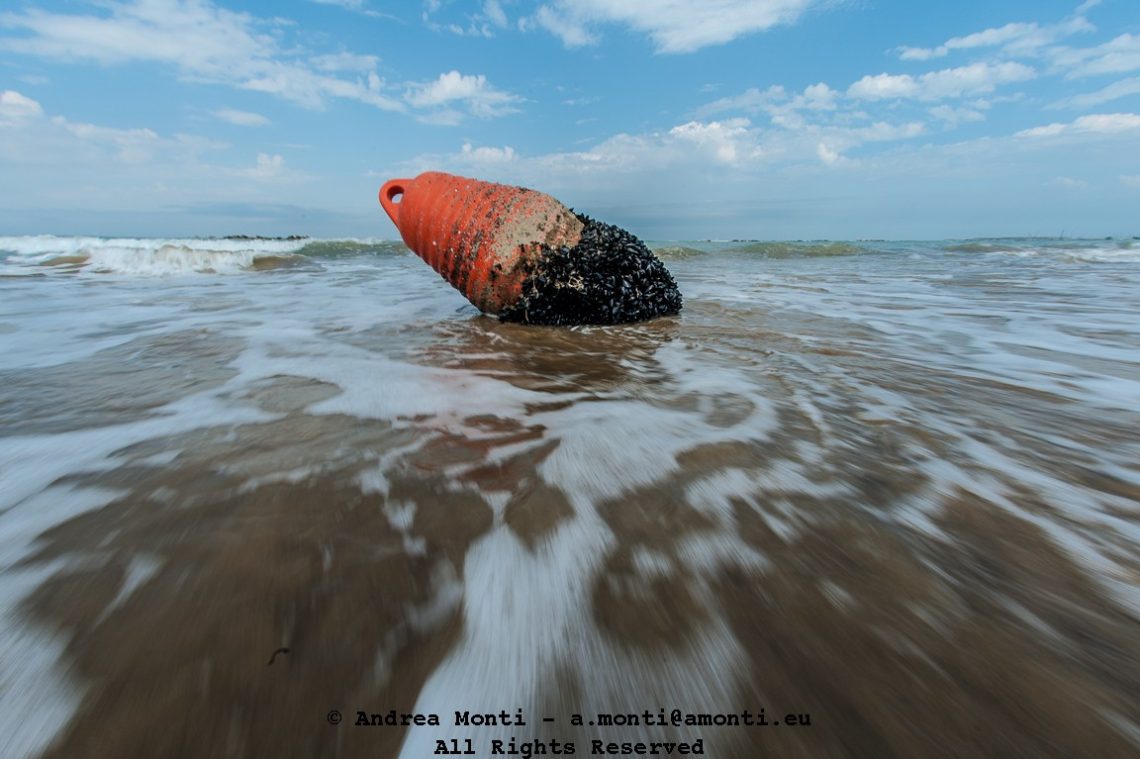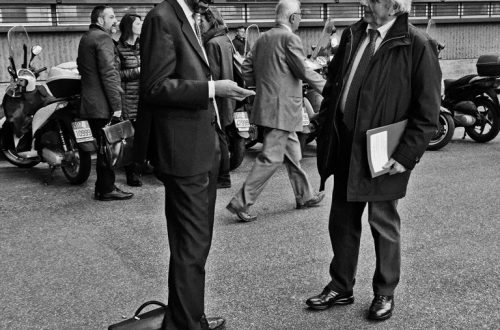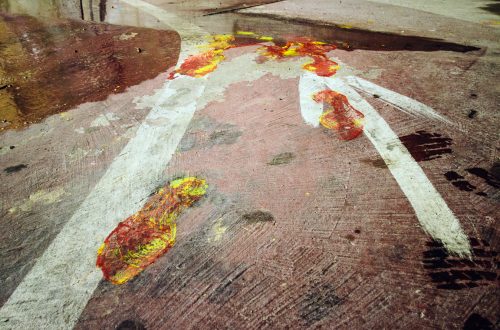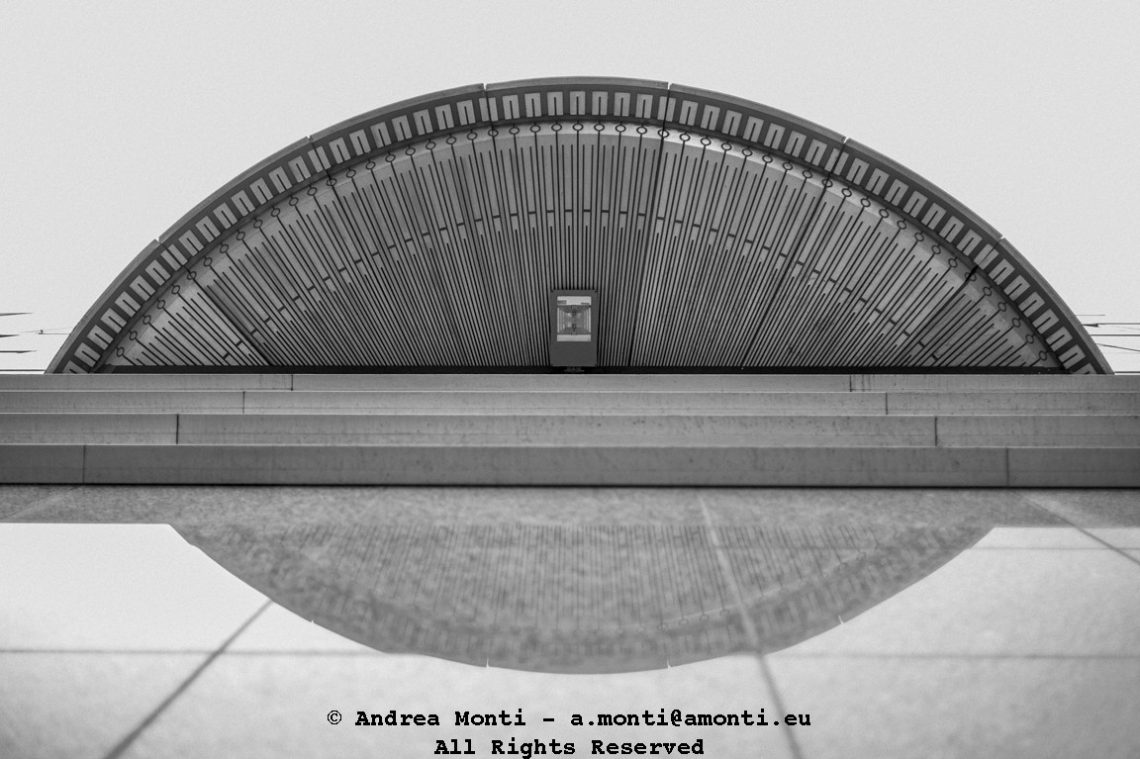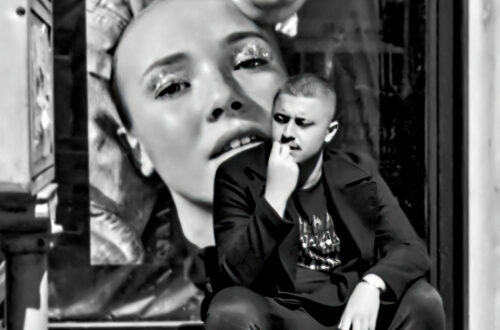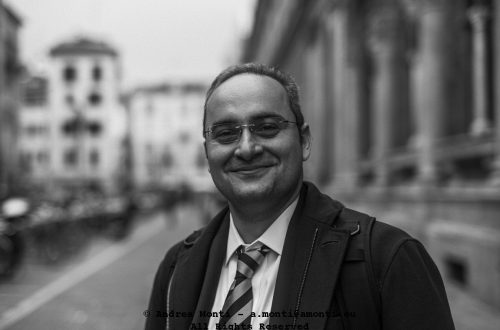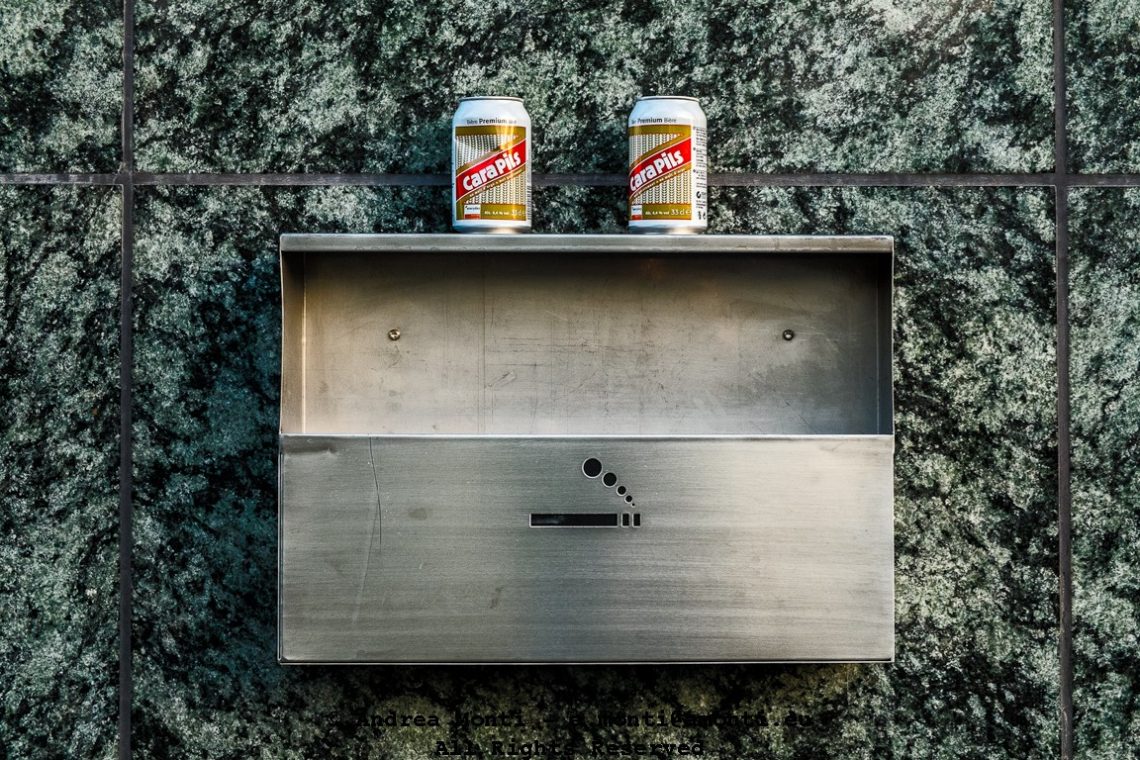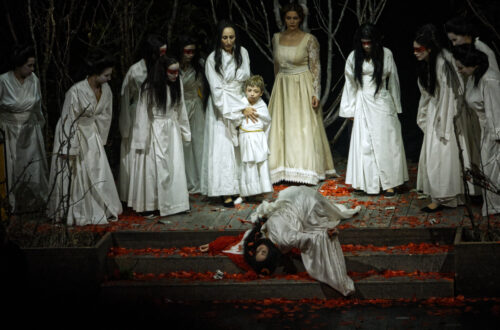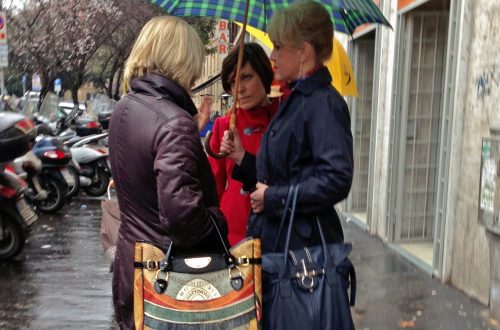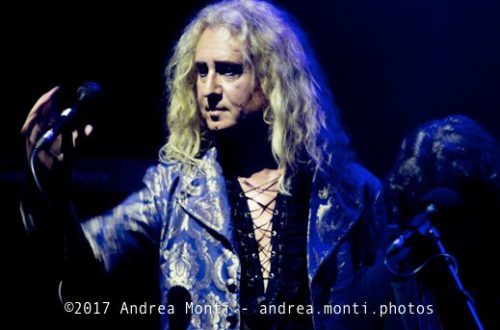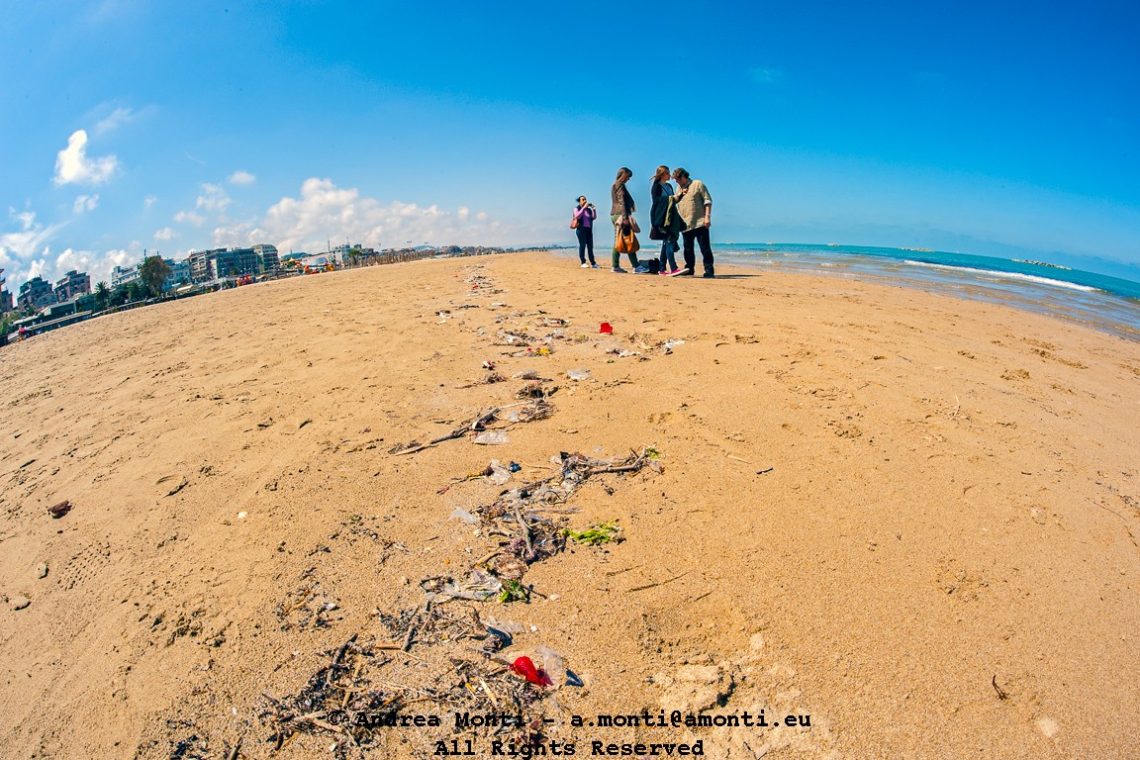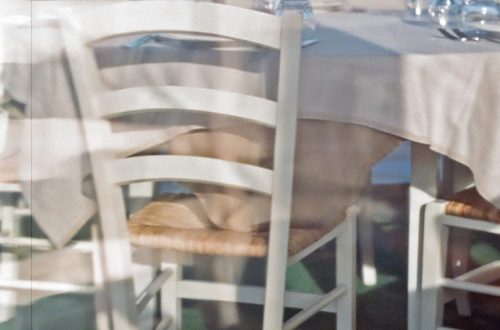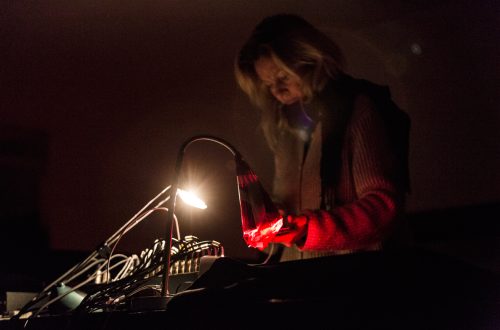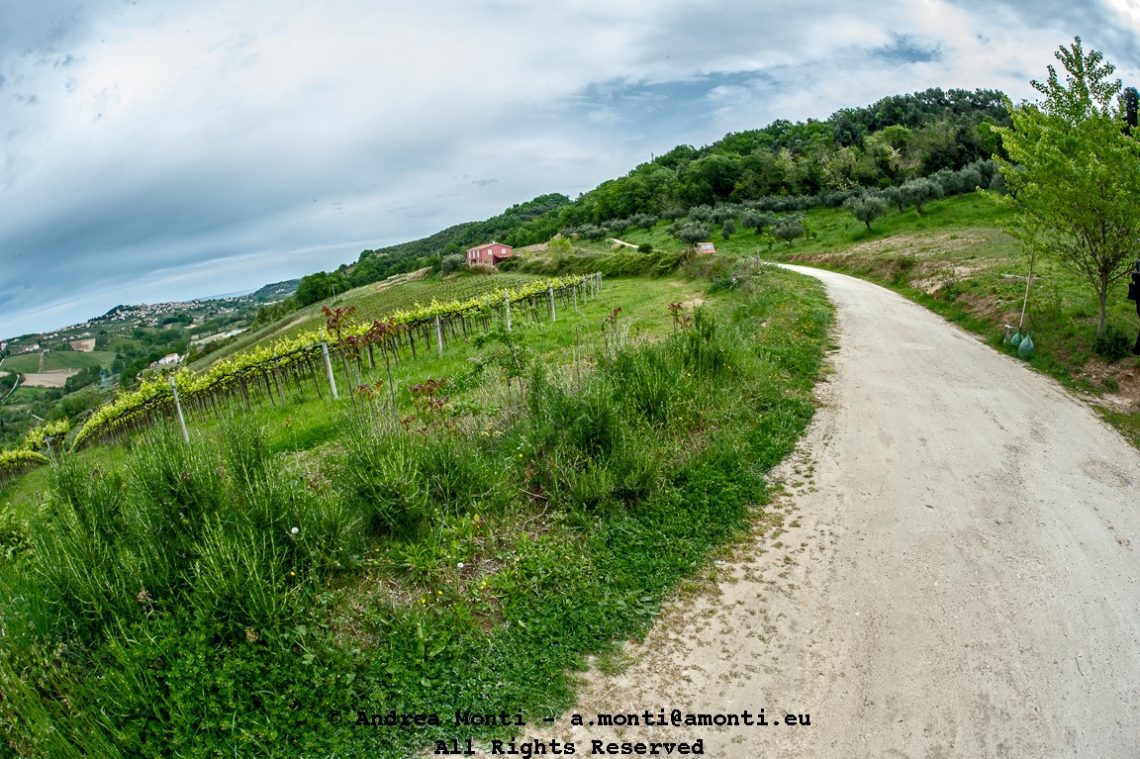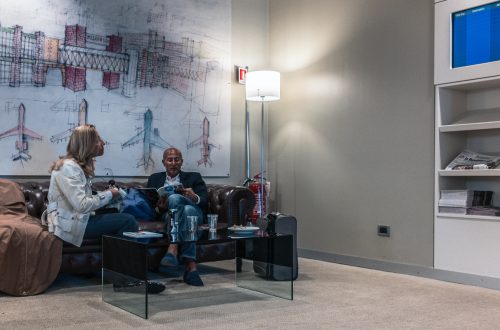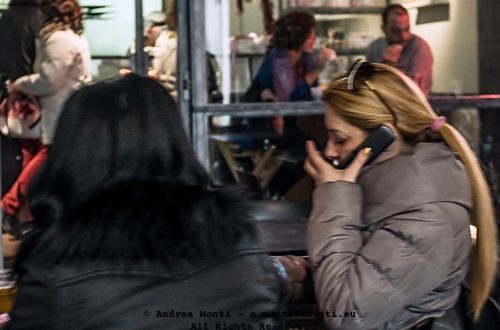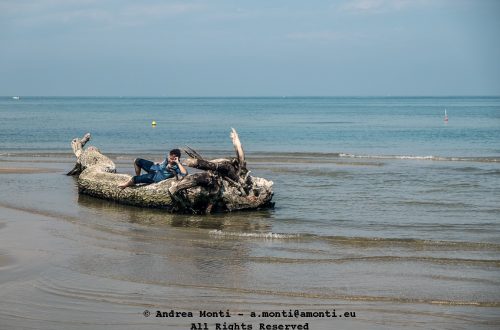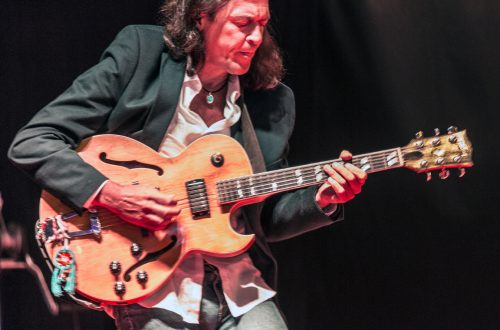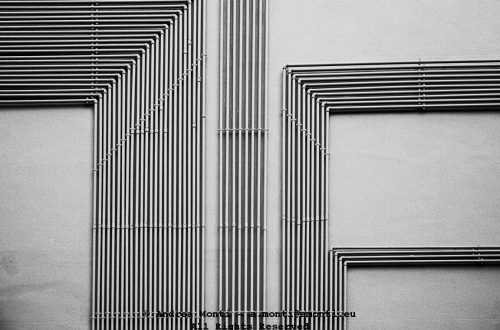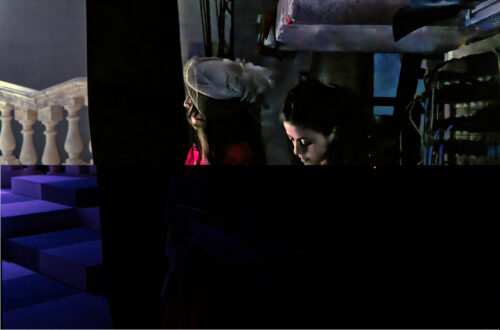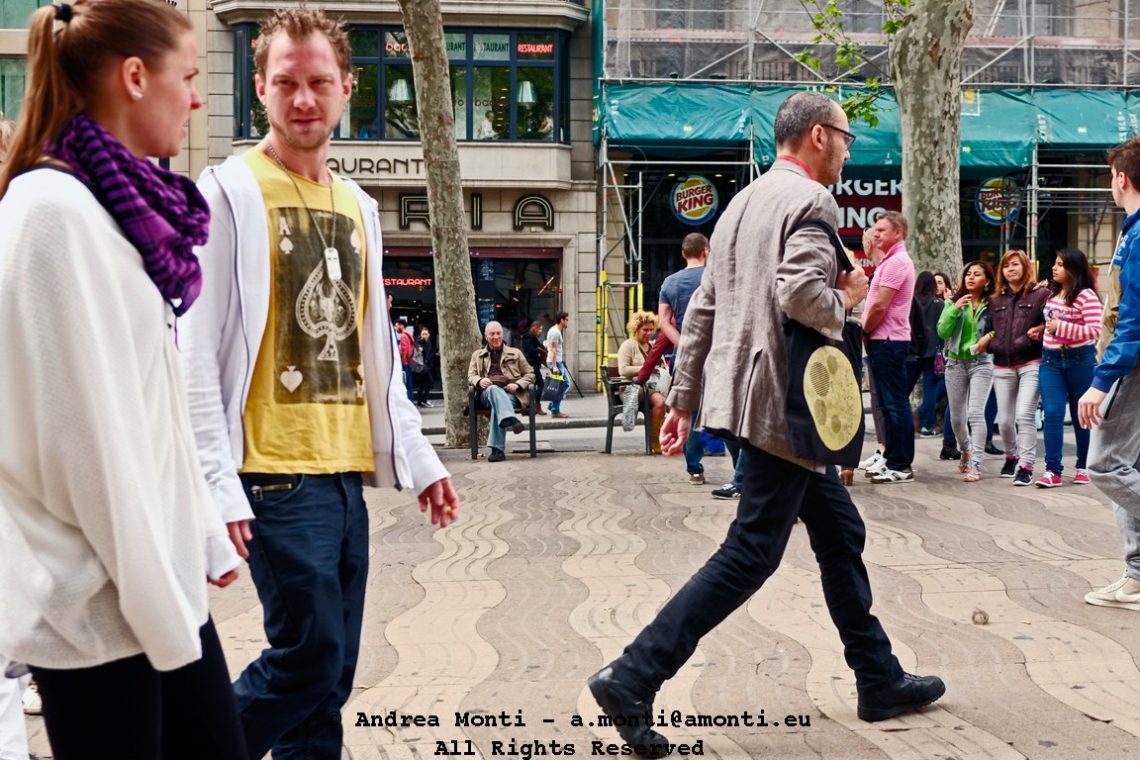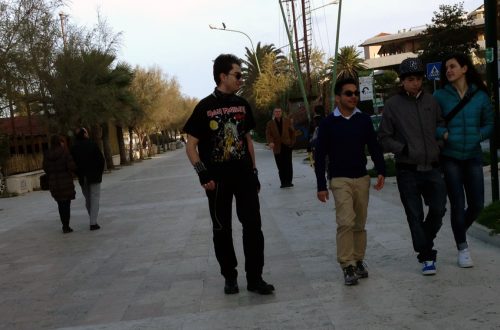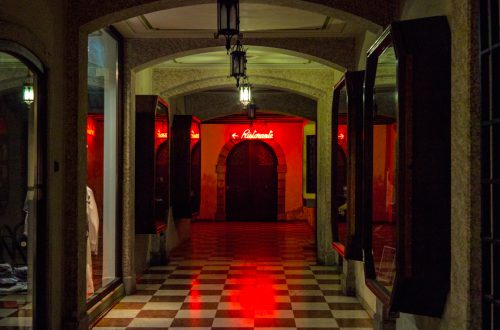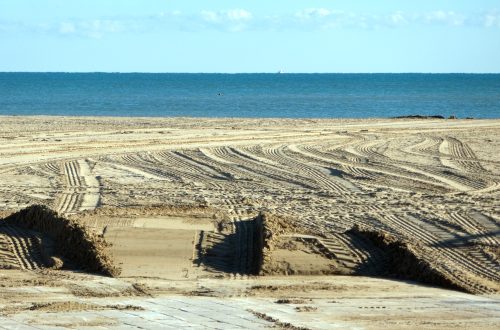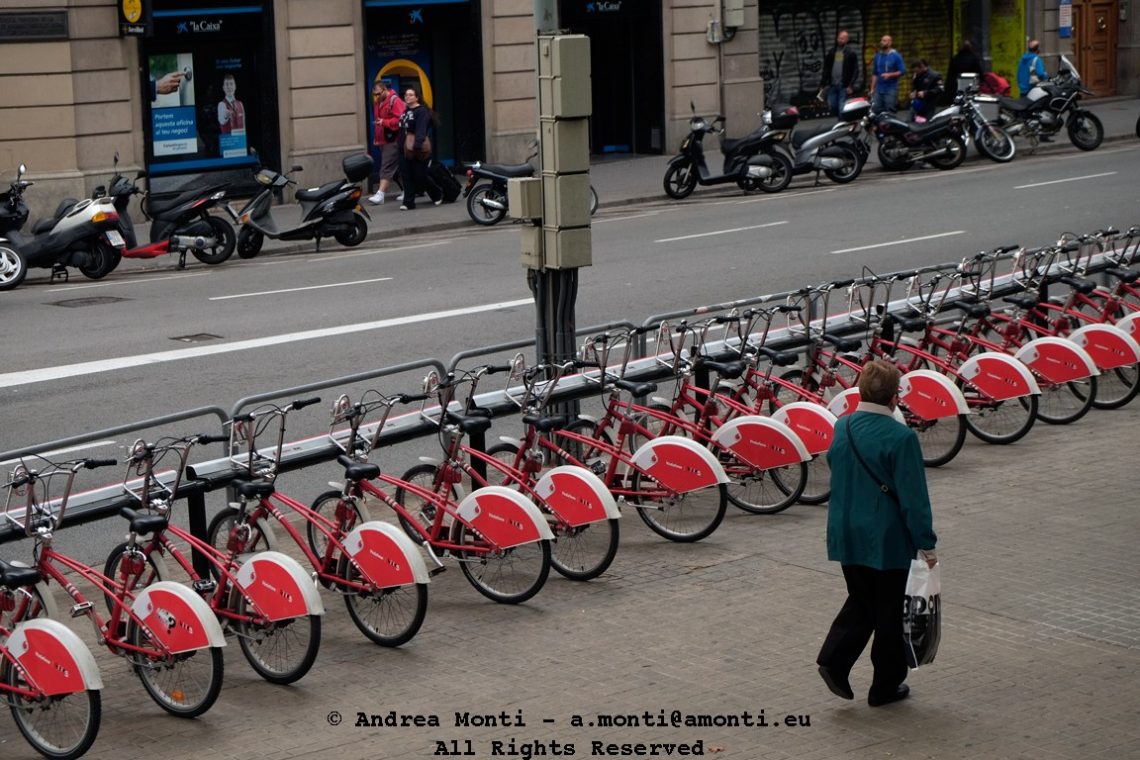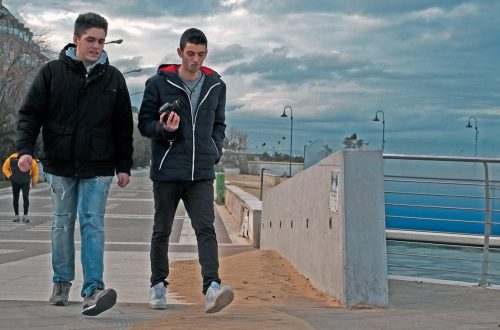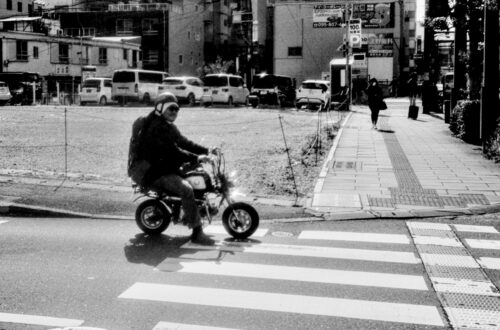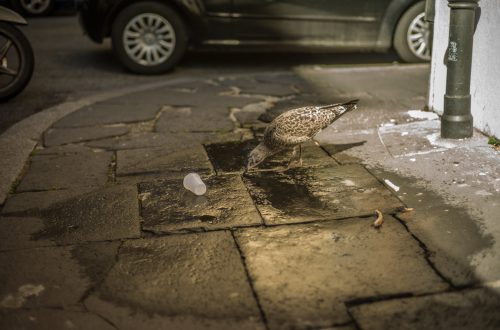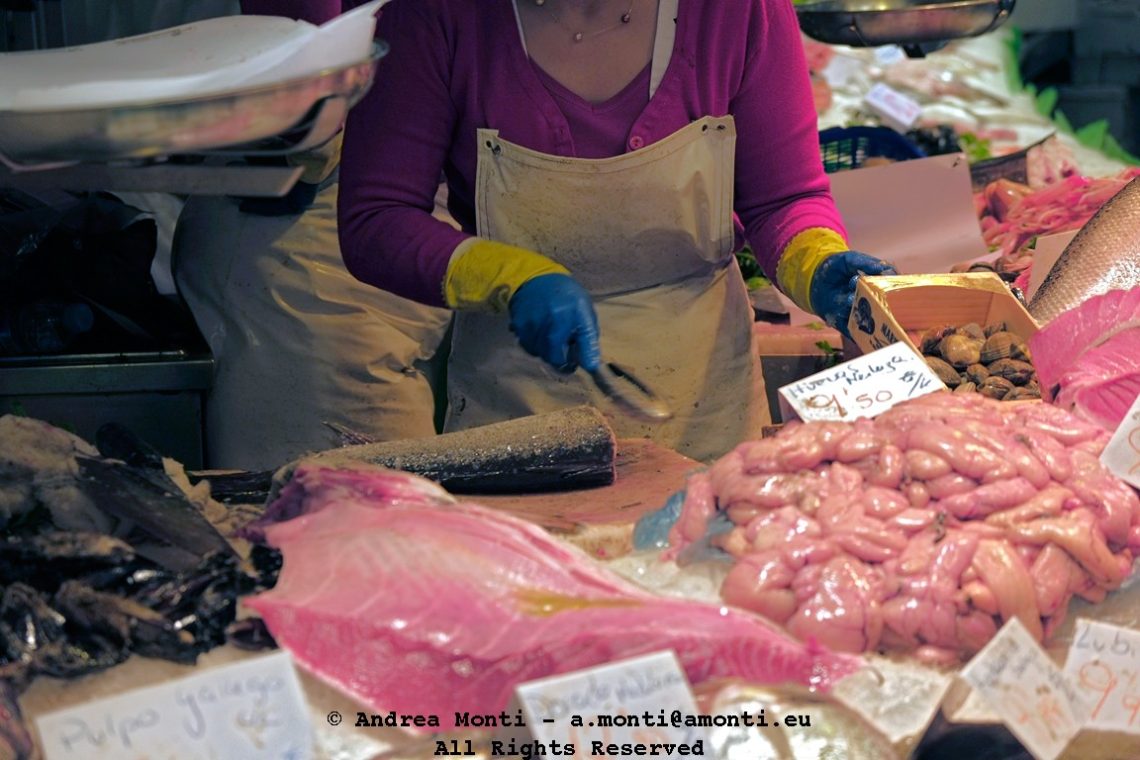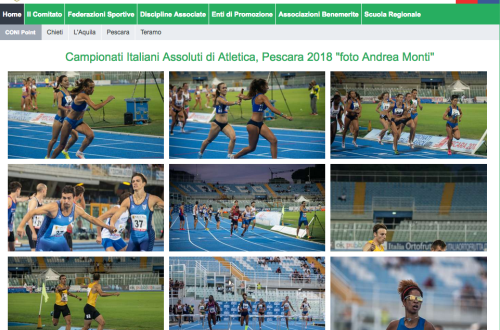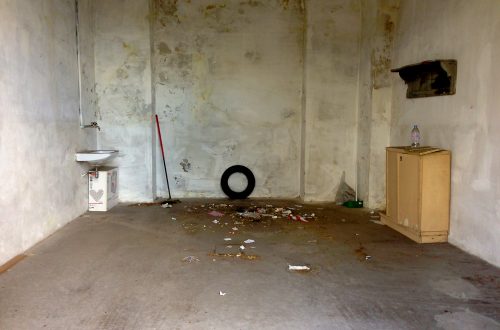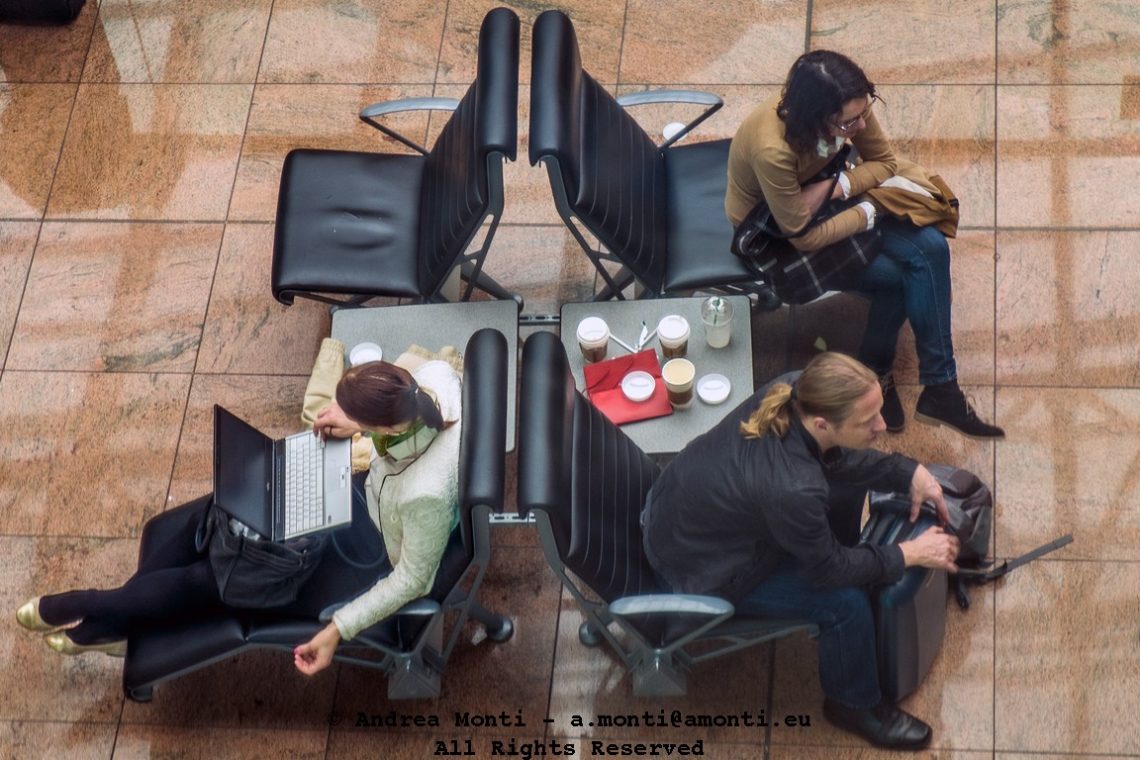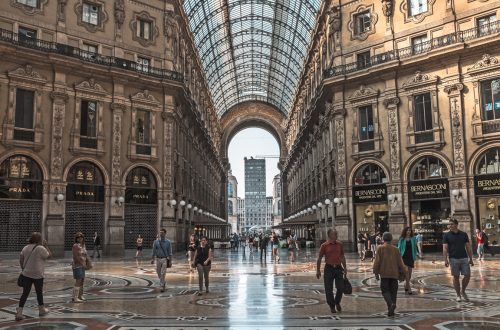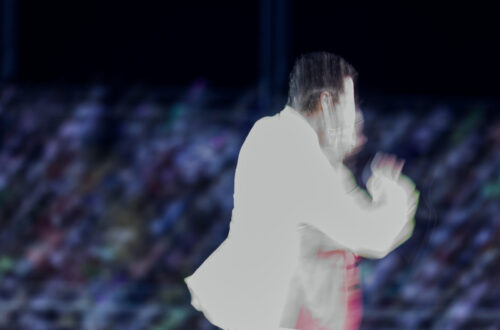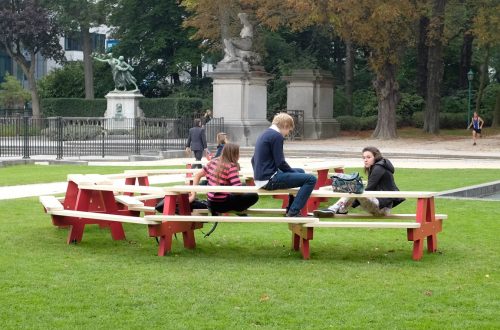-
Portrait of Keyboard Player
He had just finished a piece when I took the shot. Head tilted, hand still resting on the keys, that slight smirk not forced but earned. This wasn’t posed—it was a breath between moments, a performer halfway out of character and halfway into self-awareness. The ambient energy of the room still swirled around him—soft voices, chairs moving, blurred motion in the background—but he held still. I composed tight to emphasise the contrast between stillness and motion. The background drags slightly, figures abstracted by a slower shutter speed, but the face and fingers are crisp—anchoring the shot where it needs to be. The lighting was mixed: tungsten overhead, cooler light from…
-
A Fountain
I made this photograph in a small corner where a public fountain once served a purpose. Now it stands fenced in by corrugated metal sheeting, isolated, its basin removed, its function suspended. The graffiti—“un po’ di panna”—is not aggressive. It reads more like a private joke left in public space, a whisper rather than a shout. That small phrase is what drew my eye first. It adds a voice to an object that has otherwise been silenced. The metal barrier creates an accidental stage. Its vertical ridges repeat across the background, directing the gaze inward toward the fountain. The pink stone base, stained and unevenly worn, introduces texture and a…
-
Yes, We…Can
I took this photo because it stopped me mid-step. A banal object — a crushed Coca-Cola can — pierced on a historic stone spike, suspended in defiance or perhaps pure indifference. The tension between the industrial red cylinder and the worn, centuries-old limestone was too stark to ignore. The composition leaned heavily on perspective and focus. I shot wide open, letting the background melt into soft abstraction, just enough to hint at an ancient setting without overpowering the main subject. I tilted the frame slightly to echo the absurd balance of the can, breaking away from textbook horizontality to embrace the odd equilibrium of the scene. Exposure was critical. I…
-
Between Two Sets
-
The New Church
In the XXIth Century, a new church grows, to satisfy old needs.
-
Guru Meditation
Airports are temples of waiting. They strip away the illusion of control, leaving travellers suspended in time between one place and another. In that in-between, people invent ways to cope. Here, in a lounge of muted reds and glassy daylight, a man folds himself into a private space. One leg drawn up, back curved, cap pulled low, he cradles a tablet as if it were a small book or a talisman. His fingers rest lightly on it, not tapping, not scrolling—just holding. The surrounding noise and movement dissolve in his stillness. This is meditation for the digital age. Not in a forest clearing or a candlelit room, but in an…
-
Inside the Elevator
Escher’s Relativity inspired these shots.
-
Falling Tree
Again, an impossible perspective…
-
WTF Are They Looking At?
-
An Unplausable Perspective
There is something odd in this photo, isnt’it?
-
Portrait of a young guitar player
-
Noon on the Beach
this image hinges on simplicity and distortion. The sun was directly overhead, leaving the shadow of the pole as a near-perfect sundial, slicing the centre of the frame from bottom to vanishing point. That shadow was the whole reason to shoot: absolute verticality rendered into graphic contrast on a near-featureless plane. The lens dictates the structure. At 16mm, lines bow. The horizon curves. Perspective exaggerates. I leaned into it—there’s no attempt to correct distortion in post. The intention was not to imitate a rectilinear frame, but to emphasise space as abstraction. The beach becomes a sphere, the sky a ceiling, and the tiny trace of buildings at the perimeter only…
-
Ninja-Turtles?
I couldn’t help but smile when I saw this line of turtles perched neatly along the log, each one angled just so to catch the warmth of the midday sun. It’s a scene that strips away the pop culture fantasy of katana-wielding reptiles and replaces it with something far more universal — the quiet pleasure of simply doing nothing. From a compositional standpoint, I did well to let the log form a natural leading line, drawing the viewer’s eye from the cluster on the left to the stragglers on the right. The surrounding foliage frames the scene nicely, adding depth and a touch of chaos to balance the orderly arrangement…
-
Red Wine Makes Good Blood…
I made this image at the end of a long lunch — the kind where conversation lingers long after the plates are cleared, and the table becomes less of a place to eat and more a canvas of what just happened. The residue of red wine had bled into the paper surface, leaving behind those familiar circular stains — not accidental, not staged, just there. And I leaned in, glass still in hand, and shot. Technically, this is an exercise in distortion and proximity. I used a wide lens, close focus, and a shallow depth of field. The resulting visual field is warped, but purposefully. You can see the sweep…
-
The Misplaced Buoy
Kneeling in the surf with the camera just above waterline, I framed this beached buoy like a stranded witness—half-devoured by barnacles, its functional past eroded by time and tide. The wave motion is deliberate: a slow shutter gave the water its painterly strokes, pulling the viewer toward the object with a sense of gentle urgency. The wide-angle perspective exaggerates scale and places the buoy in stark contrast with the horizon. The red-orange plastic punctures the cool blues of sea and sky, a sharp chromatic discord that anchors the entire composition. It’s an aggressive intrusion into the otherwise pastel calm of the shoreline, yet visually satisfying because of the balance created…
-
The Eye
Another example of the constant brain’s meaning quest in the things the eye sees. It wasn’t supposed to look back. This is the underside of a building’s curved overhang, a detail most people would never glance up to see. Shot from the ground in perfect alignment, it becomes something else entirely: an iris of steel and shadow, a lens with no glass, watching the world below. I titled it The Eye not just for the shape, but for the feeling. The symmetry is strict—deliberate, almost mechanical—yet the reflection in the polished granite softens it, turning precision into something poetic. A full circle emerges where there’s only a half. What’s solid becomes imagined.…
-
Two Beers, One Cigarette
Not staged. Swear to God!
-
On the Edge of the World
This image is the outcome of a technical test as much as it is a commentary on environment and perception. I wanted to see how the venerable 1973 Nikkor 16mm f/3.5 fisheye would behave on the full-frame sensor of a Nikon D700. The result is a picture pulled to its edges, both optically and metaphorically. What this lens gives in distortion, it returns in expressive tension. The beach curves like the edge of a planet. The sky presses down as if it’s wrapping itself around the scene. A single line of debris cuts through the frame, pulling the eye toward a loosely gathered group of people, whose presence feels both…
-
Bent
When I first lifted the camera to my eye for this shot, the Nikkor 16mm fisheye was not the lens you’d expect for such a pastoral, rolling landscape. Fisheyes, after all, are often the tools of cramped interiors, extreme sports, or deliberately surreal perspectives. Yet here, in the middle of vineyard country, I wanted to see what would happen if I let its inherent distortion play with the natural undulations of the hills. The result is a scene that feels almost elastic. The road on the right curves away more dramatically than it does in reality, while the vineyard rows tilt into an exaggerated arc, their geometry bending to the…
-
Brain vs Camera
The picture on the left is what the camera saw. The picture on the right is what I had in mind while shooting. Thanks to Photoshop I’ve been able to bend the “objectivity” of the camera along the line of my creativity.
-
Las Ramblas’ Lifestyle
Who cares about pickpockets?
-
Which One?
The Abundance’s Paradox
-
A Fujifilm X-E1 Annoyance
The X-E1 is a good camera, though has some annoyances that make it less handy for Street Photography. Contrary to Leica, (some) Zeiss or (some) Nikon lenses, zone-focusing is not set on the lens barrel. You must do it either through the viewfinder or the LCD, and this makes problematic the switch from one technique to another. Same is true for aperture settings. Operating the camera one-handed, happened twice to me, led to a change of the image quality settings from RAW to Jpg. Unfortunately I wasn’t aware while shooting and I’ve wasted half a day in Barcelona getting inferior quality pictures.
-
Same Seats, Different Lifes
They’re close, but never been so distant
